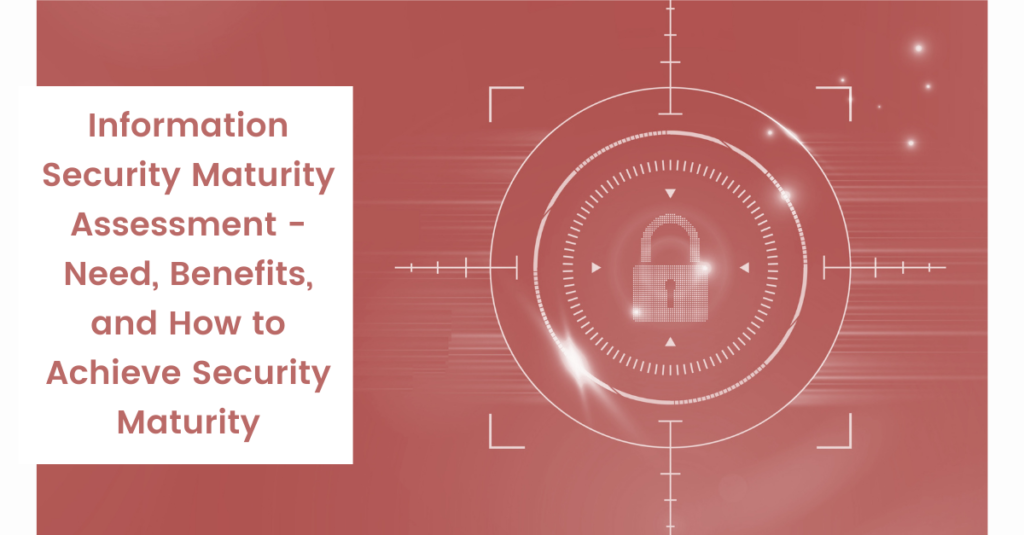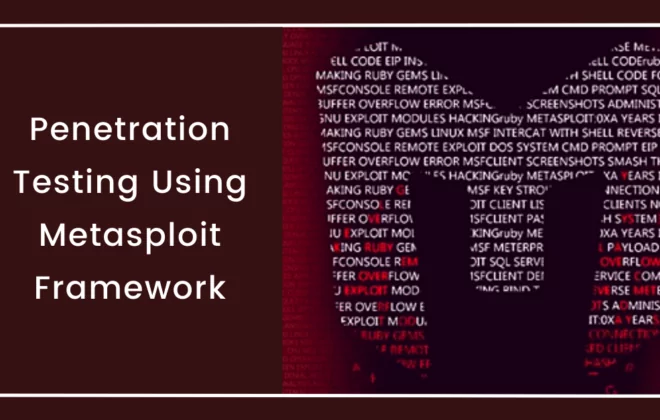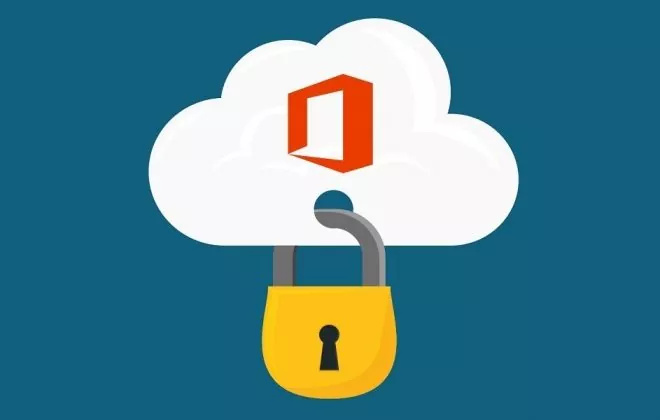Information Security Maturity Assessment – Need, Benefits, and How to Achieve Security Maturity

In today’s connected world, security risks are widespread everywhere and impact individuals as well as organizations. As cyberattacks are increasing in number, complexity, and severity, improving security postures is essential to effectively tackle these security threats. Organizations must strive to evaluate and attain cybersecurity maturity to ensure they remain safe and secure. To achieve InfoSec Maturity, knowing more about the Information Security Maturity Assessment (ISMA), its importance, need, benefits, and how we can achieve security maturity is important.
What is Information Security Maturity?
Information Security or Cybersecurity Maturity refers to the security position of an organization with respect to its risk environment and tolerance. Depending on organizational environments, security risks vary widely because each organization has its own risk culture. Therefore, the level of cybersecurity maturity is different for every organization and can be determined by how effectively and efficiently it implements and utilizes security controls, reporting, and processes.
Information Security Maturity Assessment
An information security maturity assessment (ISMA) can be defined as a gap analysis and risk assessment performed using information security best practices and widely accepted cyber frameworks for evaluating and strengthening the security posture of organizations. Cybersecurity maturity assessments help organizations to improve and prioritize their cybersecurity operations as well as create an actionable strategy for the future. The results of the maturity assessment indicate the level of information security maturity that organizations have in effectively implementing security controls, processes, and reporting mechanisms for detecting, responding, and preventing cyberattacks.
Importance of assessing an organization’s security maturity level
With the increasing number of cyberattacks across different industries throughout the world, organizations must be prepared to defend against these attacks with appropriate security controls and processes. This is impossible without assessing their cybersecurity maturity. By assessing their cybersecurity maturity, they can know about the vulnerabilities, how effectively their security controls are implemented, and how well they can protect against modern cyber threats.
Organizations need to adopt a security-first approach to attain a high level of threat prevention, detection, and response. Since all parts of an organization are affected by security threats, the organization must achieve a high level of security maturity to ensure key areas are protected. For achieving this, assessing the security maturity level of organizations is the first step.
Benefits of Information Security Maturity Assessment for organizations
It is evident that performing information security maturity assessments is necessary for organizations to tackle various security threats effectively and efficiently. However, it is also important to know how organizations can benefit from these assessments. InfoSec maturity assessments can help organizations in the following ways:
- Help recognize the need for constantly improving cybersecurity: Cybersecurity maturity assessments help organizations that have a basic level of security policies and controls and have no automation or consistent policy management across their systems by identifying their strengths and weaknesses. This helps them to focus on the areas that require more security, thereby increasing their security maturity and improving the security posture.
- Ensure appropriate security after a digital transformation: Organizations that go through a transformation (from on-premises to the cloud) often need to reassess their security controls and processes and create a security baseline to maintain and enhance the security posture. Information security maturity assessments (ISMAs) help them to accomplish this task.
- Help organizations to work in multi-cloud or hybrid environments securely: Since every cloud provider offers a different set of security controls and policies, it is essential to assign a set level of security maturity across all environments while working in a hybrid or multi-cloud environment. With cybersecurity maturity assessments, organizations can decide and implement the required security controls to improve their overall security posture across all environments.
- Assist organizations with regular audits: Security audits are an integral part of most organizations because these audits directly affect their position in the market in front of their potential and existing clients. These audits are often performed by external auditors to identify whether the organizations being audited comply with the current and relevant industry standards like HIPAA, PCI, GDPR, etc., or not. By conducting regular security maturity assessments, organizations can present the evidence of their security posture and security improvements in front of their clients.
Security Maturity Levels
Organizations may have different security levels depending on their industry, expertise, skilled staff, etc. In short, there are five security maturity levels:
- Cybersecurity policies are undocumented and processes are unstructured: At this security maturity level, an organization does not have automated controls and have only foundation controls like scanning. Controls are not reported to the business in this case.
- Cybersecurity processes are developed and policy is defined informally but only applied partially: The organization may have some automation but with limited business reporting in this case.
- Cybersecurity policies and processes are being improved: At this level, more attention is paid to documenting and implementing the security policies and automating security controls with enhanced levels of reporting.
- Cybersecurity processes are well controlled by the organization: At this level, the organization is capable of controlling information security processes with its comprehensive policies, proper implementation, improved automation, and business reporting.
- High security maturity is attained: Here, the organization has a comprehensive policy which is fully implemented, complete deployment and automation of controls, and improved business reporting across all systems. Also, the organization, at this maturity level, constantly optimizes the security processes via monitoring and has an InfoSec-first culture.
Information Security Maturity Assessment Frameworks
Depending on the preferences of an organization, the organization can choose from several cybersecurity frameworks to ensure appropriate information security maturity. Some major cybersecurity frameworks that organizations can adopt include
- CIS CMM: The CIS Cybersecurity Maturity Model (CMM) is a complete policy, automation, controls, and reporting model that helps organizations to ensure that they manage cybersecurity effectively and are protected against a wide variety of threats. The U.S Department of Defense developed this model for assessing the security maturity of organizations as per their efficiency in meeting multiple controls. Its latest version requires organizations to meet 18 different security controls to achieve security maturity, including control of assets, access control management, data protection, malware defenses, audit logs, etc.
- NIST: It is a cybersecurity framework developed by the National Institute of Standards and Technology (NIST) that provides 5 implementation tiers to help organizations identity, prevent, and respond to cyber threats.
- C2M2: It is another popular security framework that assists organizations in evaluating their security processes and improving them on a regular basis.
Tips for Reaching InfoSec Maturity
For achieving information security maturity, organizations must implement the following steps:
- Always strive for continuous improvement: Most organizations think that if they have achieved a high level of security maturity anytime in the past, they are safe. It is not true because attackers are leveraging new methods & ways of attacking so security measures need to be constantly updated to address the current situation. Achieving security once will not keep them secure forever. They need to create a culture where security is optimized continuously. This will help strengthen their security posture as well as keep them protected against modern cyberattacks.
- Adopt security in a security-first approach: Cybersecurity must be prioritized in every organization from the higher management to normal employees. Cybersecurity becomes essentially important in the present scenario when employees are connecting to their corporate networks remotely. Organizations need to implement appropriate security controls effectively as per the data privacy regulations.
- Automate security controls: To achieve a high level of security maturity, automation plays a vital role. Automated security solutions not only save time and effort but also provides higher reliability and better reporting, which helps in responding to incidents quickly. Without automated solutions, it is practically impossible for organizations to secure their infrastructure, networks, applications, and data while handling huge data volumes.
- Have a cybersecurity model in place: It is more important for organizations to have a cybersecurity model and follow it diligently rather than what framework they choose (if they don’t follow it diligently, the most suitable framework will also not help them). A cybersecurity model helps organizations to have a clear understanding of their security measures implemented and the areas that need improvement. This will help them to strengthen their security posture and security maturity.
- Make cybersecurity a board issue: Cybersecurity must be given importance not just by IT departments but also by senior management executives. It is because attackers can easily target senior management executives via social engineering attacks because they do not know much about cybersecurity. Organizations must include directors, C-level executives, and other management staff in cybersecurity discussions and initiatives so that they can be timely aware of new developments and challenges related to cybersecurity.
Organizations can take the help of various cybersecurity service providers to ensure their security maturity is maintained if they cannot do it independently. As a prominent cybersecurity service provider, we do provide Information Security Maturity Assessment services to organizations worldwide.
References
https://www.rapid7.com/globalassets/_pdfs/product-and-service-briefs/rapid7-csma-service-brief.pdf
https://www.ensono.com/resources/blog/security-maturity-why-you-need-it-and-how-achieve-it/
https://orangecyberdefense.com/global/security-maturity-assessment/
Author,
Mustafa Ahmed,
Varutra Consulting Pvt. Ltd.




